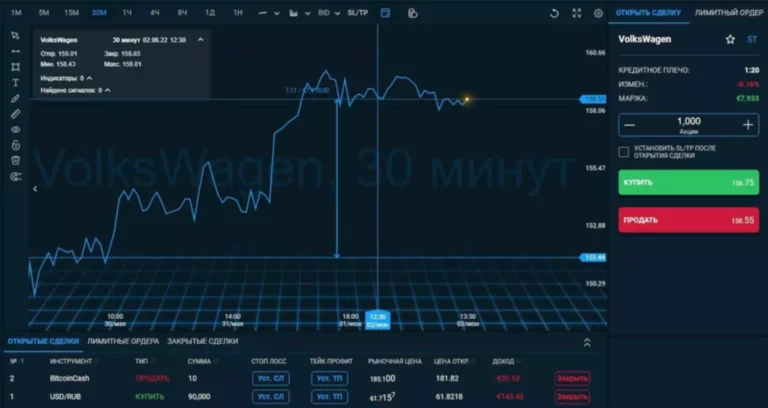Content
Private blockchains provide a secure platform for sharing patient data public vs private blockchain among healthcare providers while ensuring compliance with data protection regulations like HIPAA. This facilitates better coordination of care while safeguarding sensitive medical information. A 2022 study by IBM found that 56% of healthcare executives plan to implement a private blockchain solution by 2025 to enhance data security and interoperability. While both types of blockchains utilize distributed ledger technology, they differ significantly in their approach to accessibility, transparency, and consensus mechanisms.
Use Cases for Private Blockchain Technology
Understanding the nuances of public VS private blockchains is crucial for appreciating https://www.xcritical.com/ the full potential of this technology. In contrast, private blockchains are permissioned networks, where only authorized users can participate. Without further ado, let’s go even deeper into these distinctions in the next section.
Benefits of Private Blockchain Technology
In this way, there would be fewer errors and no way for someone to alter financial data after it is entered. As a result, financial reports to management and executives become more accurate, and Proof of stake the blockchain is accessible for viewing and generating real-time financial reports. Public blockchains allow anyone to view transaction amounts and the addresses involved.
The Difference Between Public and Private Blockchains

It could also help chronologically log patient claims — avoiding duplication with distributed ledger on a healthcare company’s centralized network. Other concerns may center on the entity that runs or sponsors the private blockchain. This entity calls the shots, potentially leaving some users on the private blockchain network to wonder if that organization’s needs will be met before theirs, she added. Ultimately, the best blockchain for your business depends on your specific needs and use case.
These commitment schemes proved to be much quicker to validate than the zero-knowledge proofs. If you want to know more about blockchain and Bitcoin, CoinGeek is the perfect place for beginners. Generative AI is introducing a brand-new risk vector to the tech domain including issues such as ‘hallucinations’, ‘jailbreaks’ and ‘adversarial prompting’ that can manipulate data. In today’s world, there is a lot of debate on choosing between Public and Private Blockchains for business operations. It is important to understand the difference between the two to decide which one is right for your business. BitDegree aims to uncover, simplify & share Web3 & cryptocurrency education with the masses.
It’s optimized for developing dApps and smart contracts and uses a complex consensus mechanism based on PoS that provides better performance than older mechanisms, according to its proponents. It also includes support for a governance feature for voting on changes to the platform. The Tezos community has been upgrading the platform at a rapid clip with enhancements that improved performance and increased the size limit on smart contracts.
- Master The Crypto is a user-first knowledge base featuring everything bitcoin, blockchain and cryptocurrencies.
- Furthermore, the sheer expense makes this kind of private blockchain implementation simply out of reach for smaller and medium-sized companies, and untenable in the long-term even for major global players such as IBM and Maersk.
- Building and maintaining them can be expensive, potentially posing challenges for smaller organizations or startups.
- Another application built on the IBM platform, IBM Blockchain Transparent Supply, is designed to help enterprises improve traceability in SCM.
- With the blockchain’s identity management capability, individuals and businesses can store their identity data on their devices, choosing which information to share with validators.
Test networks provide “free” cryptocurrency you can use to pay transaction fees. To carry out complete software tests, you’ll need to deploy your code to the live blockchain and run your app there. Live blockchain testing on a public blockchain requires transaction fees using live cryptocurrency. For that reason, you probably won’t be able to carry out as many tests as you can for non-blockchain apps. In a permissionless environment, there is no way to completely get away from the cost of testing in a live environment. The first step is to use a local blockchain to initially test core app functionality.
Many people think that public blockchains can be difficult to govern because they are run by a network of computers with no single point of control. This can lead to issues with decision-making, coordination, and updates to the network. While these problems may be true in some cases, blockchains can be effectively governed in a way that doesn’t necessarily need to be difficult and inefficient.

Some businesses may require the security and privacy of a private blockchain, while others may benefit from the openness and accessibility of a public blockchain. It’s important to carefully consider these factors and consult with experts to choose the best blockchain for your business. Public blockchains, such as Bitcoin and Ethereum, can be more scalable than private blockchains due to their large and decentralized network. Private blockchains, on the other hand, may struggle to scale as the number of authorized entities increases. Once data is added to a block, it becomes immutable, meaning it cannot be altered, denied, or deleted. This immutability ensures the integrity and transparency of information, which are core features of both public and private blockchains.
Regulatory frameworks are still evolving, but for now, it seems unlikely that public blockchains will get a nod from enterprises due to privacy and other compliance issues. With the blockchain’s identity management capability, individuals and businesses can store their identity data on their devices, choosing which information to share with validators. In this setup, the participant may use a third-party tool to protect confidential information, like a password manager app, a digital bank vault, or an authentication protocol.
Public blockchain are completely transparent, meaning that anyone can view all transactions on the network. Examples of public blockchain include Bitcoin, Ethereum, Polygon, BASE and many more. Let’s dive into a comparison of public vs. private blockchain for tokenization down below. Blockchain technology has emerged as a revolutionary solution for a wide range of industries and has been the driving force behind the creation of digital assets like Bitcoin and Ethereum. The blockchain market size was valued at $12.3 billion in 2023 and is projected to reach $163.83 billion by 2029 at a CAGR of 56.3%, according to a report by Fortune Business Insights.
Moreover, its incentivizing scheme fuels the democratized nature and authority-free operation, encouraging new participants to join and keep the network active. The following explains how public, private, and permissioned blockchains affect each business application. Network users cannot modify valid entries on a public blockchain unless a dishonest actor controls more than 51% of the network. Even if this did happen, the modification would be publicly provable and detectable. With private blockchains, the operator must validate participating parties before they join the network. They must also obtain permission before reading, writing, or editing the blockchain.
Orbs believes that the same process will happen with blockchain, enterprises may choose to start on private blockchains, but ultimately, they will migrate to public protocols as their confidence increases. Currently, the private blockchains hand is on top, with projects like Hyperledger and Corda managing to on-board enterprises onto their platforms much more successfully than their public blockchains counterparts. Even though both types of blockchains are based on the same technology, your choice between these deployment options has a large impact on how you write and test your blockchain apps.
These are just a few illustrations of how public blockchain examples are disrupting traditional systems and paving the way for new possibilities. As this technology continues to evolve, we can expect even more innovative applications to emerge across various industries. Another prominent example is Ethereum, which functions as both a platform for the Ether cryptocurrency and a decentralized computing platform for various applications. Its smart contract functionality has fueled the growth of decentralized finance (DeFi) apps, non-fungible tokens (NFTs), and other innovative projects.
